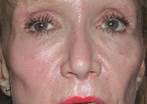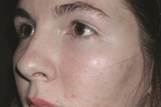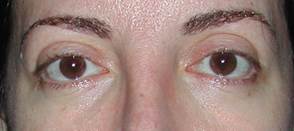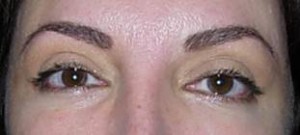Skeletal versus Soft Tissue Facial Augmentation
In the last decade, facial rejuvenation surgery has transformed dramatically as plastic surgeons recognized that as patients age, their skin not only stretches and sags but that the soft tissue of the face also atrophies, or loses volume. With this understanding, facial rejuvenation surgery techniques are no longer focused on simply removing excess skin or pulling it tight. Instead, surgeons are drawing on a wider range of techniques that reposition soft tissue (such as midface lifts) or supplement it (such as fillers and fat grafts) to restore youthful facial dimensions and appearance.
As these procedures have grown in popularity, some surgeons have misused the increased focus on soft tissue to justify using hard and soft tissue augmentation interchangeably, claiming they can achieve equivalent cosmetic outcomes. While the face’s appearance is determined by both the skeletal structure and the soft tissue underneath the skin’s surface, changing one can have drastically different outcomes than changing the other.
For example, a surgeon may reverse the typical indications of hard and soft tissue techniques and use hard malar skeletal implants to restore cheek fullness or use fat grafts to create malar skeletal prominence. If the implanted material is only a millimeter or so thick, the visual effect of either augmentation modality may be equivalent depending on the thickness of the overlying soft tissue envelope. However, beyond a minimal augmentation, the visual effects of these two procedures are markedly different.
 A larger implant placed on the malar bone will increase the projection of the cheek, making the face more defined and angular. When soft tissue thins and loses tone with age, however, large implants will become increasingly visible and the face will appear thinner and more skeletal as shown here.
A larger implant placed on the malar bone will increase the projection of the cheek, making the face more defined and angular. When soft tissue thins and loses tone with age, however, large implants will become increasingly visible and the face will appear thinner and more skeletal as shown here.
With implant selection, the surgeon should remember that soft tissues change over time, while implants do not.
 Implanting fat into the cheeks will also make the cheek project more, but the face will appear increasingly round, and therefore, less defined and less angular as shown here.
Implanting fat into the cheeks will also make the cheek project more, but the face will appear increasingly round, and therefore, less defined and less angular as shown here.
Although there is limited interchangeability between soft tissue and skeletal augmentation, they can certainly be complementary. Many patients can benefit from both volumetric increase in their soft tissue envelope and an increase in their skeletal projection. Each operative technique can be beneficial with proper evaluation and aesthetic judgment.
The patient below had both facial implants and a midface lift to improve the appearance of her lower lids.
Learn more about fillers and fat implants or facial implants.


